Probably the most asked question in my chicken group on Facebook, especially in the spring and early summer, is: how do I know if my chick is a hen or a rooster? It’s a complicated question with no clear-cut answers. Let’s get into it…
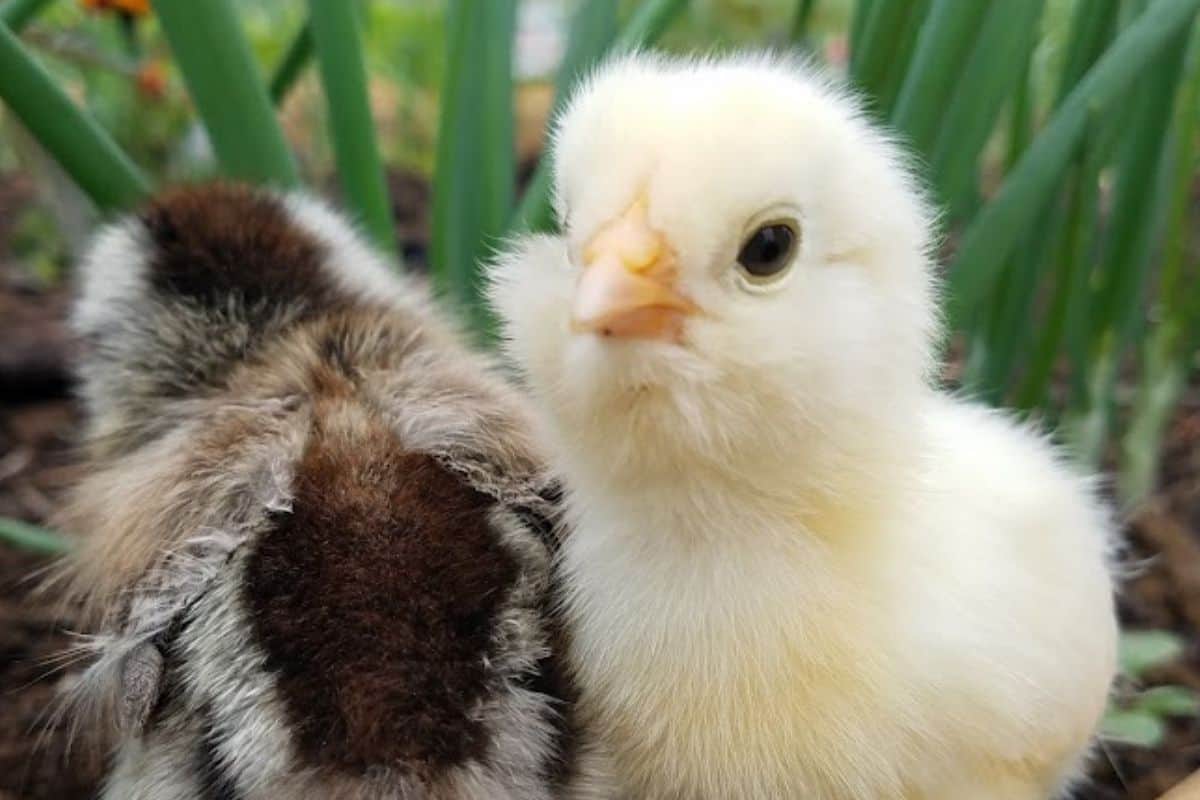
How Do I Know If My Chick Is A Hen Or A Rooster?
With chick season upon us, many new and not-so-new chicken lovers are bringing home or hatching out new fluffy bundles of joy.
One of the most anticipated parts of raising baby chicks is finding out what gender your chicken is. For some, it’s a matter of not being able to have roosters in their community, therefore determining the sex early will aid in the rehoming process should there be boys.
For others, it’s just general curiosity and a matter of choosing an appropriate name for your fluff ball. Determining the gender of your new baby chick is not a straightforward process in most cases, there are however exceptions to the rule.
Buying Sexed Chicks
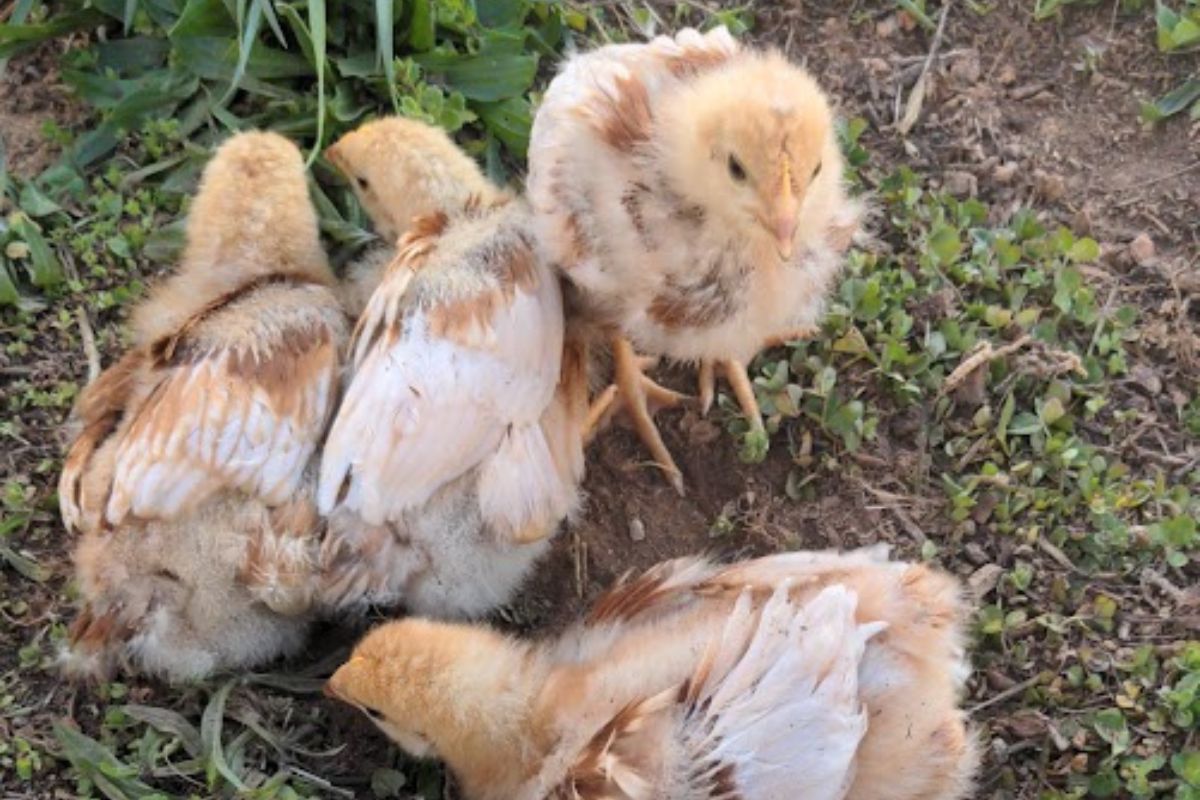
There are ways to increase your chances of purchasing a specific gender when the chick is a day or so old. Most folks looking to buy sexed chicks are typically looking for pullets, which is what you call a young female chicken.
If you buy sexed chicks directly from a hatchery, your chances of receiving a pullet or pullets are about 90-95%. There is always a small chance that a chick may have been sexed wrong, and you may receive an occasional cockerel, the name for a young male chicken.
Chicken sexers go through a training process before being turned loose in the hatchery to begin sexing chicks.
Another way to guarantee that you are only getting pullets is to find auto-sexing breeds. This means that the sex of the chicken can be determined at hatch by the feather color or other distinctive markings. There are not very many true auto-sexing breeds out there. Here are three:
- Cream Legbar
- Golden Comet
- Norwegian Jaerhon
- Bielefelder
While the Barred Rock and Dominique are considered by some to be auto sexing breeds because they have physical traits at hatch that can help determine gender, they are not true auto sexing breeds.
In the 1920s, the need to tell the sex of a chick at hatch became a crucial commodity for commercial chicken farmers. Not having to grow out chicks to the point of identifying sex was a huge money saver by eliminating the need to feed males until they could be culled.
Thus, the sex-linked hybrid was created.
A hybrid is born by taking a hen of one breed and breeding her to a rooster from another breed. These hybrids can be sexed at hatch by the color of their feathers and/or other specific markings.
The interesting thing about a hybrid is that the sex linked gene only occurs in the first generation, meaning you cannot breed two sex linked hybrids and get the same results. You must breed the original two breeds to get the sex linking.
Often, you will find these hybrids readily available at your local feed store or online hatchery. They have become extremely popular with backyard chicken owners, especially those not allowed to have roosters in their neighborhood. Hatcheries can be very secretive about the breeds they use to create these hybrids. Here are some commonly seen names of sex linked hybrids:
- Golden Comet – New Hampshire Red rooster x White Plymouth Rock hen (my personal favorite)
- Cinnamon Queen – New Hampshire rooster x Silver Laced Wyandotte hen
- ISA Brown – Rhode Island Red rooster x White Leghorn hen
- Black Sex Link – Rhode Island Red rooster x Barred Plymouth Rock hen
You will find that most of your sex linked hybrids are really good layers. They are on par with the Leghorn, Buff Orpington, and Australorp, all well-known for their prolific egg-laying.
So, if you specifically want pullets, buying sex-linked or auto-sexing chicks is the way to go.
Hatching Your Own
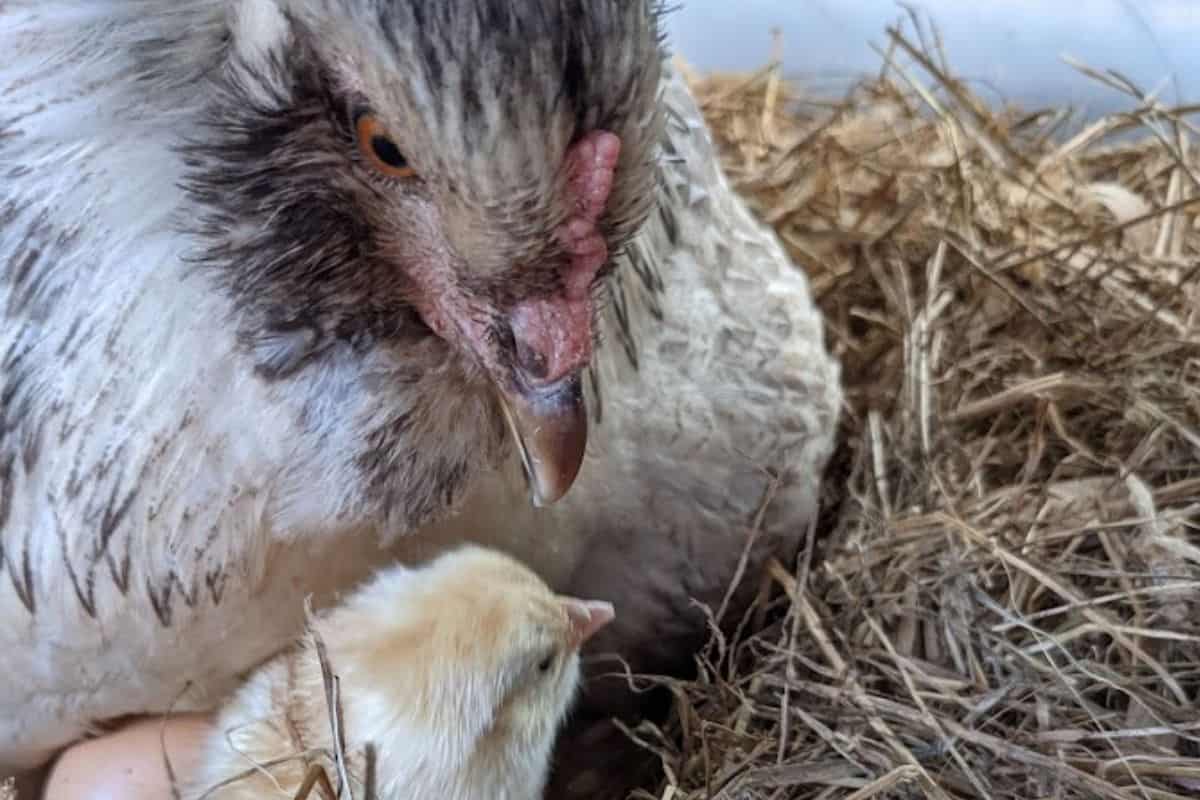
Hatching out chicks is something many backyard chicken owners eventually decide to do. There are many reasons for wanting to hatch your own:
- it’s more cost-effective
- maybe you have a favorite hen, and you’d like to have some of her offspring
- perhaps you are a breeder of a specific breed or breeds and are working on bettering your flock
- raising chicks to sell
Whatever your reason for hatching out your own, it makes telling the sex of your chicks a bit more complicated. If you are not hatching an auto sexing breed or a sex linked hybrid, being able to tell the sex at hatch is nearly impossible. There are many theories and wives’ tales out there, but I wouldn’t put much stock into them.
Related: Broody hens.
Below are some ways it has been said you can determine the sex of your chick from before hatch to at about one to three days old:
- Egg shape – Old farm lore suggests that the shape of an egg can give you an idea of the sex of a chick before it has even hatched. Pretty genius, huh? The theory is that rounded eggs will produce hens, while eggs that are pointed or oblong in shape will produce roosters. If this were actually true, no one would hatch roosters, right? While it sounds interesting, no scientific data supports these claims. I tried it last year just for fun and found that I hatched both hens and roosters from each egg shape. So, if you are looking for a fun experiment, it is worth a try, but you shouldn’t get your hopes up.
- Weight on a string – Another old wive’s tale is that if you tie a weight to a string and dangle it above a developing egg the weight will swing in a circular motion if it is a hen, and back and forth if it is a rooster. Again, there is no scientific data to back this up but if you want to try it for fun there is no harm.
- Vent sexing – Vent sexing is a practice best left to professionals. Hatcheries employ vent sexers that have gone through rigorous training to be able to implement this method accurately and safely. While vent sexing can be extremely accurate when done correctly, I would not recommend trying to do this yourself. You could wind up injuring the chick.
- Feather sexing – When feather sexing, you want to examine the wing feathers of a chick between one to three days old. A pullet will have primary feathers (feathers closest to the wing tip) longer than the covert feathers (feathers closest to the body). A cockerel will have primary and covert feathers about the same length. After day three, feather sexing is no longer reliable as the cockerel’s growth catches up to the pullet. For this method to be effective, the chick must be from a breed of a rooster that has rapid feather growth and a hen that grows feathers slowly. You can’t just feather-sex any chick and get an accurate answer. Typically, these birds are bred at hatcheries for large commercial broiler operations to quickly determine sex and separate the slow-growing pullets from the faster-growing cockerels.
So basically, if you are hatching your own chicks or buying from another individual, it is nearly impossible to know the sex of your chick when it is very young. It then becomes a waiting game. Wait for them to grow out and start displaying clear signs of gender.
Determining Gender
At some point in the growth process, you will see clear signs of pullet or cockerel traits in your chicken. Depending on the breed, this could be as early as five weeks old and as late as four to five months old.
I can get a pretty good idea with my Easter Egger and Olive Egger chicks at eight to ten weeks. I am usually stumped with my Silkies until four to five months of age. Here are some of the more obvious signs you will encounter when trying to determine your chicken’s gender:
Male behavior
Cockerels can begin to show signs of male behavior as early as a few days old. While this is by no means foolproof, it can be a helpful tool in determining early on the gender of your chick. Some examples of male behavior are:
Posturing
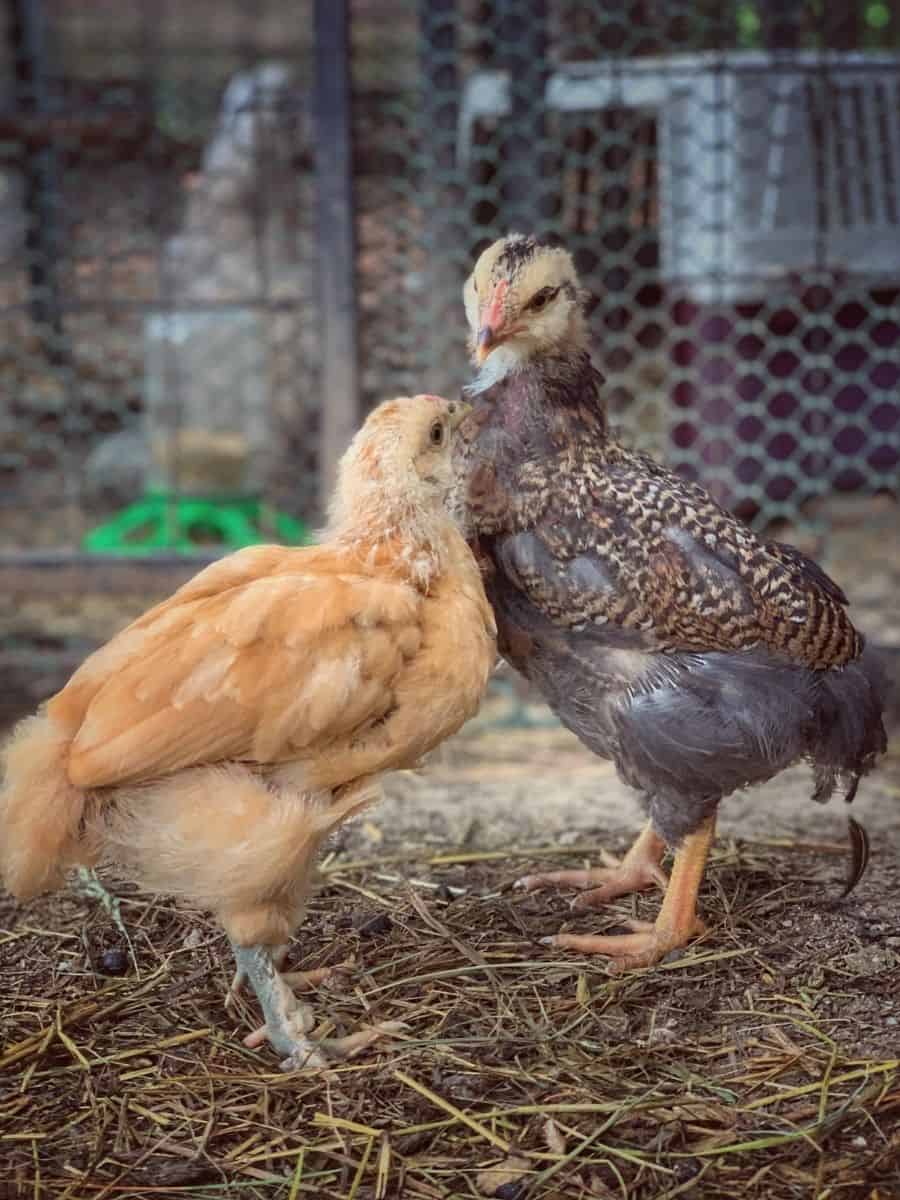
Sometimes, a young male chick will show signs of dominance early on by standing straight up and charging at your fingers or hand as you lower it into the brooder. They may also begin to spar with the other chicks in the brooder.
Whistling
Only male chickens will make this sound. It is pretty distinct and sounds like a whistle or chirp.
Friendliness
When chicks are young, the cockerels tend to be the friendliest. They will come up to you when you put your hand in the brooder and show no fear, whereas the pullets can be wary and skittish.
Physical signs
As your chick grows, a few physical characteristics will significantly help determine gender. These will become more obvious as the chick matures into the “teenage” growth stage.
1. Comb and wattles
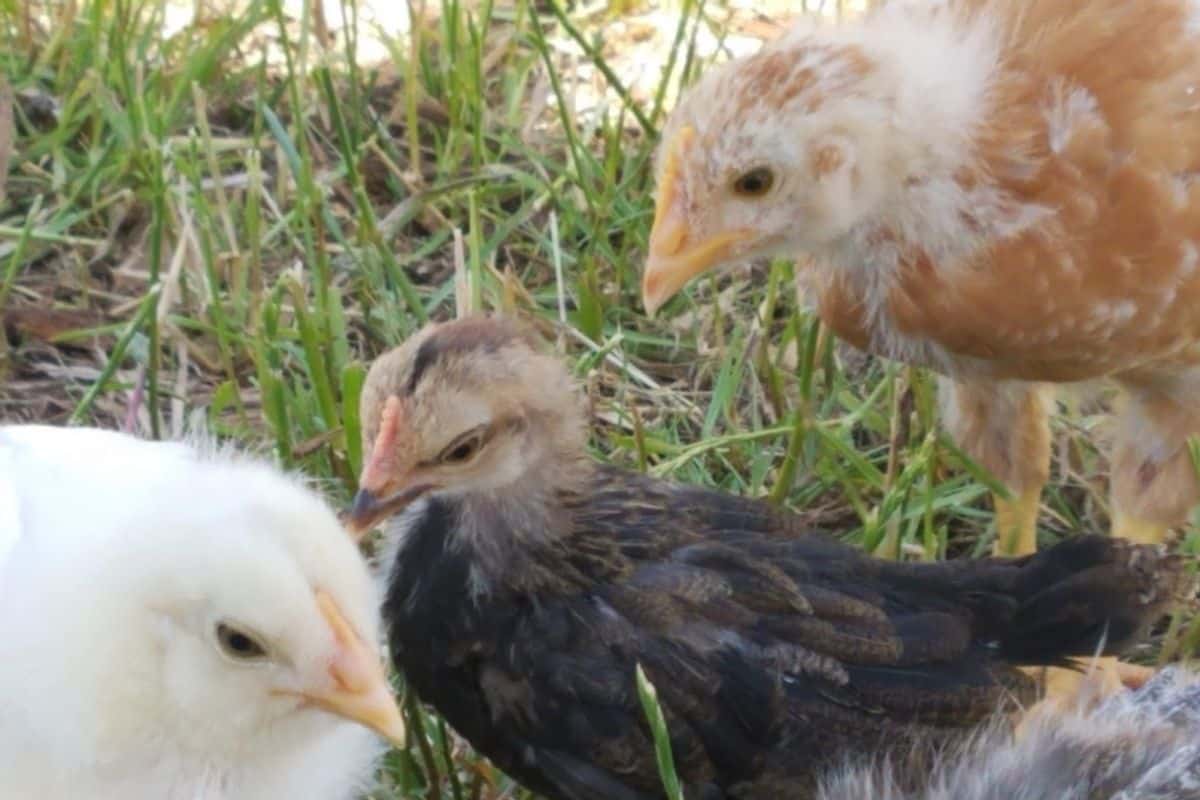
Around five to eight weeks, depending on breed, your chick will start showing signs of gender by the growth and color of the comb and wattles. A pullet of most breeds will have a slower-growing, smaller comb that remains pinkish in color until she nears laying age. Cockerels will grow their combs and wattles sooner, and they turn red at a much earlier age than pullets. This can be a good indicator of gender early on. I’ve had some cockerels show signs of comb growth at three to four weeks.
2. Hackle and saddle feathers
Each gender has a distinct shape to these feathers. Your pullets will have a rounded feather at the saddle, and hackle areas and cockerels will be pointed. This can be tricky and is not usually apparent until ten to fifteen weeks of age, depending on breed and growth rates.
Some feather patterns on a pullet may make you think the feather has a pointed tip when, in fact, it is just the patterning on the feather and not the actual shape itself.
One way to check is to put a white piece of paper behind the feathers in question to see if they are actually pointed or if it is indeed the pattern of the feather.
Cockerels will have pointed feathers at the base of the neck where it meets the shoulder (hackle feathers), and at the point where the tail intersects with the body (saddle feathers).
Another good place to look is at the feathers on the tip of the tail. This is when a piece of white paper would come in handy again. Spread the tail feathers out against the white paper. If they have rounded tips, it’s a pullet; pointed tips, it’s a cockerel.
3. Uneven coloration
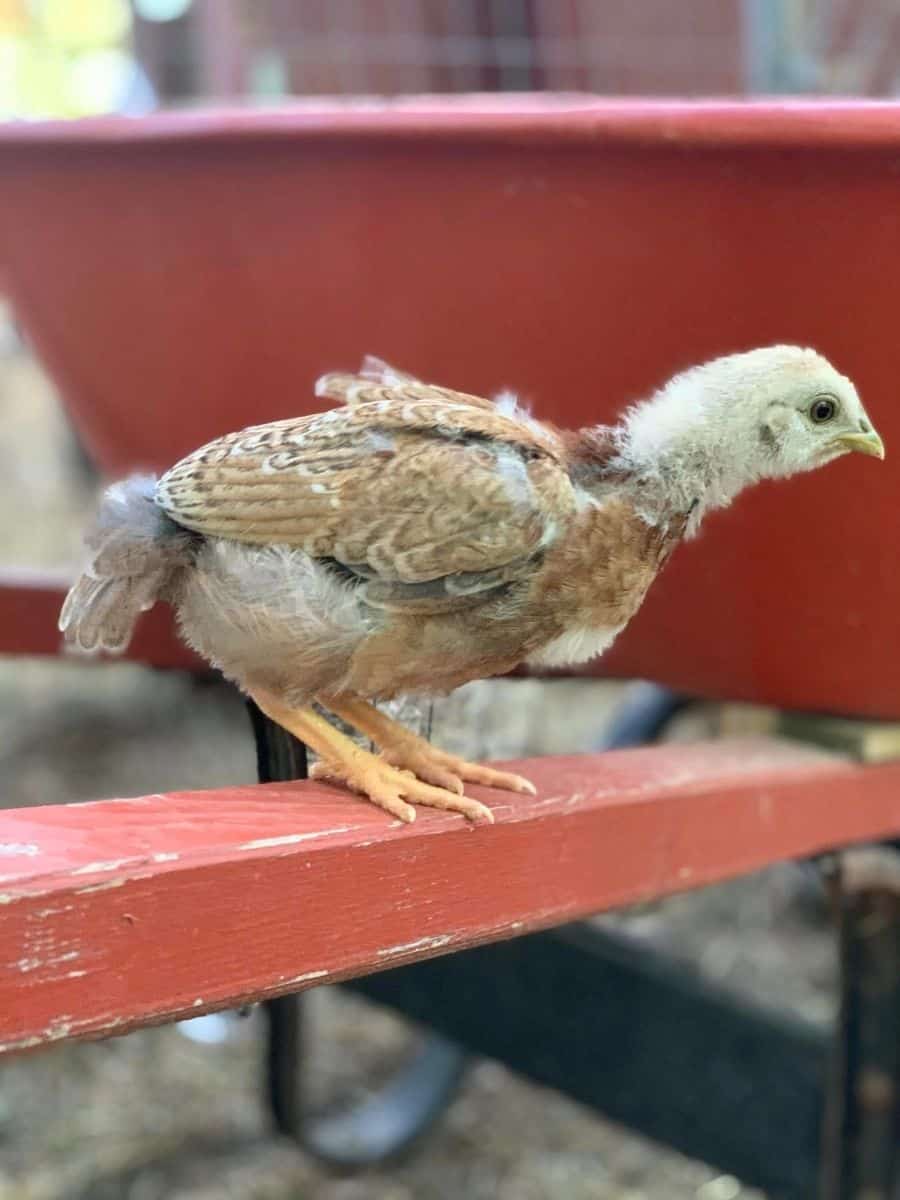
this physical sign especially holds true in your Easter and Olive Eggers. As your chick grows out and sheds its downy feathers for more permanent adult feathers, you’ll begin to see the patterning emerge.
Most pullets have an even patterning throughout and do not show any splotchy patches. Cockerels will show signs of splotchy red patches, usually concentrated on the shoulder area. Depending on breed and growth rate, these feathers begin to emerge from eight to twelve weeks. There are exceptions to this rule. Splash-patterned birds can have splotchy coloration in both genders.
It sometimes comes down to the old saying, wait till it crows or lays an egg. This is a sure-fire way to tell whether you have a hen or a rooster.
Frequently Asked Questions
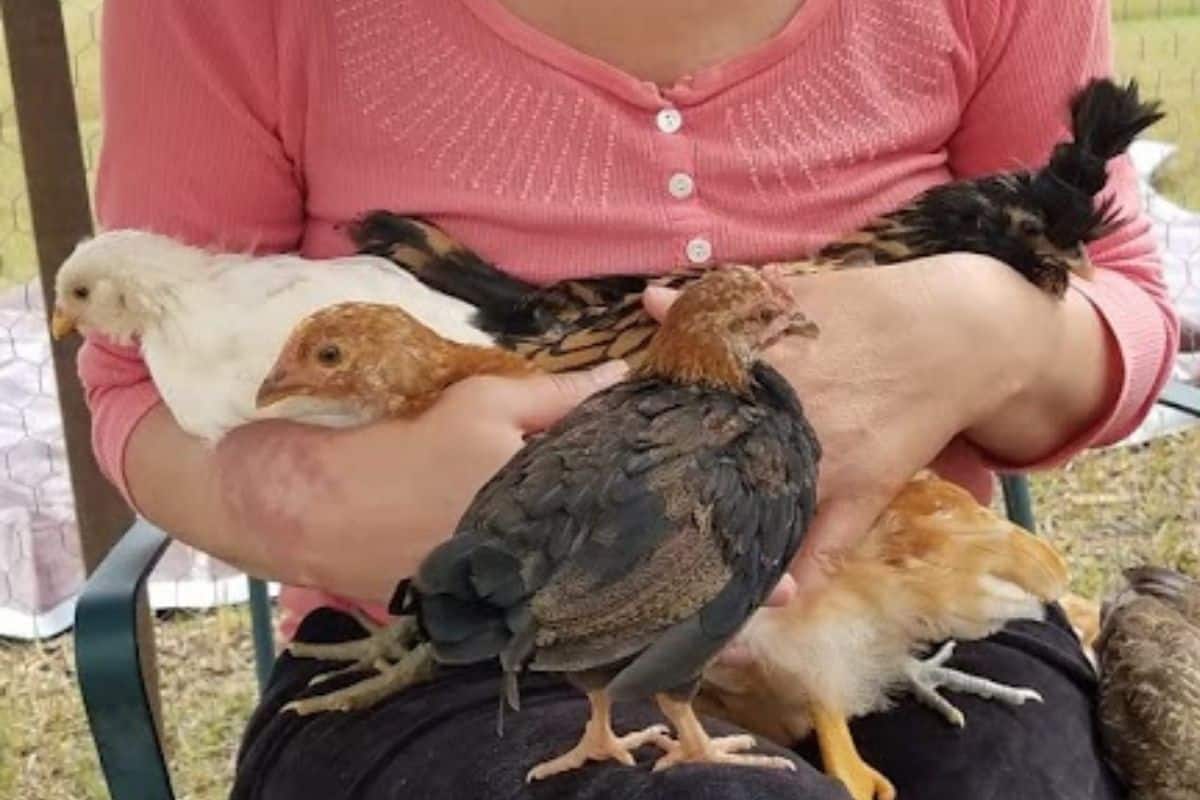
What if I buy my chicks from a breeder and they tell me they are sexed?
Unless the breeder is breeding auto-sexing breeds, creating sex-linked hybrids, or is a trained chicken sexer, then they cannot possibly know the sex of the chick at a few days or weeks old. Most reputable breeders will sell their chicks as straight run, meaning there’s a 50/50 chance you’ll get a pullet.
I see a little bump on my chick’s legs. Are those spurs?
Not necessarily. Both pullets and cockerels can have these little bumps on the inside of their legs about mid-way down. A rooster doesn’t really start to grow his spurs until after he is a year old. Leg bumps are not a reliable method of determining gender early on.
I bought my chick from a feed store, and the bin was labeled pullets. I’m starting to think one of them is a cockerel. How does that happen?
While chicks labeled pullets are sexed at the hatchery, sexing is only 90-95% accurate. There is always a slight chance you could get a cockerel or two from a bin labeled pullets. Another reason this could happen is if the store maybe got the chicks mixed up or mislabeled after they were delivered. A lot of the store employees are not chicken people and may not catch it if a mistake is made and the wrong chicks are sold. If you are looking for a specific breed or type of chick, pull up a pic on your phone while you are in the store to see if the chicks in the bin look like the breed you are seeing online.
Love roosters, but can’t have one in your backyard? Get one of these!
Check out these fun snow-day activities for chickens.
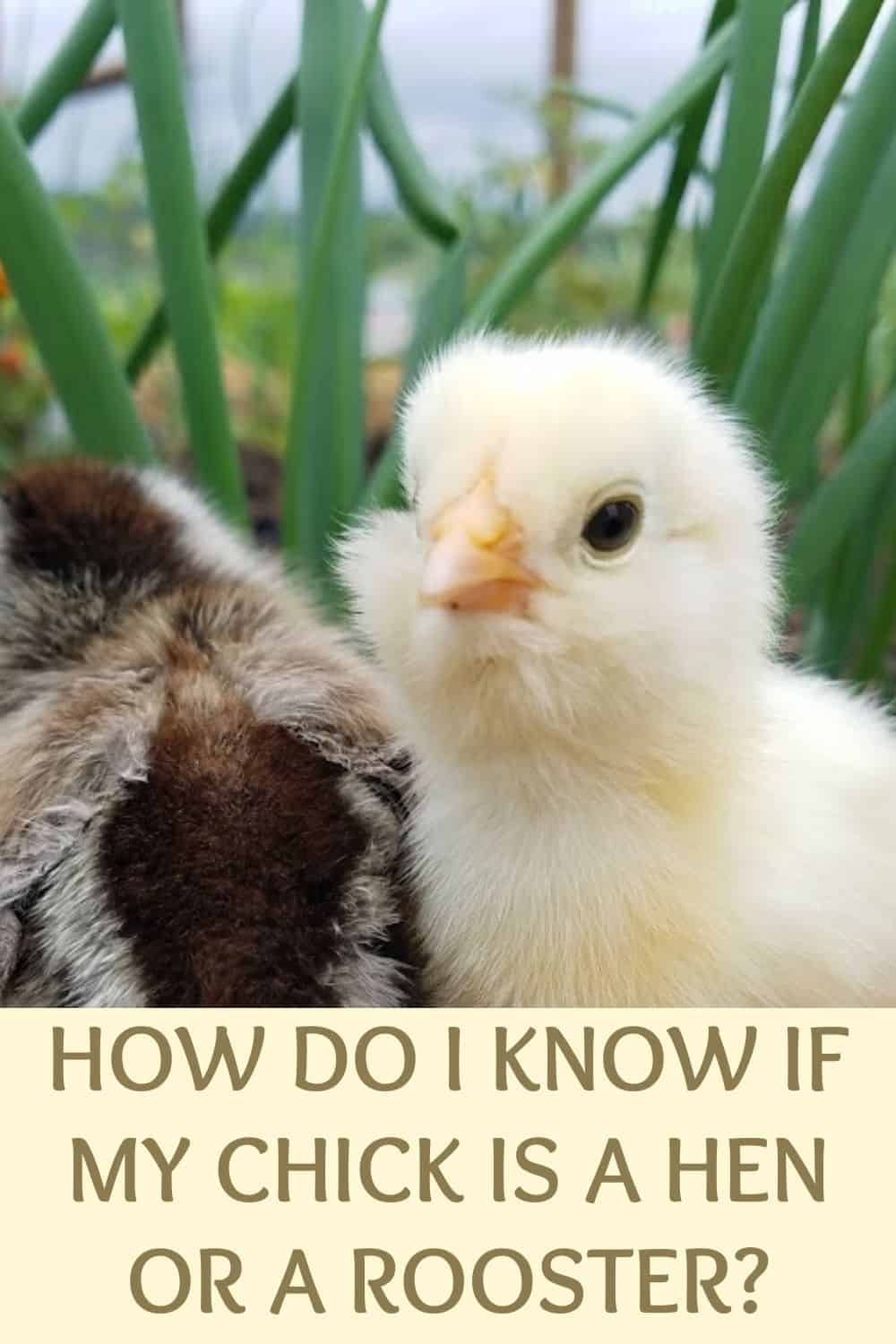

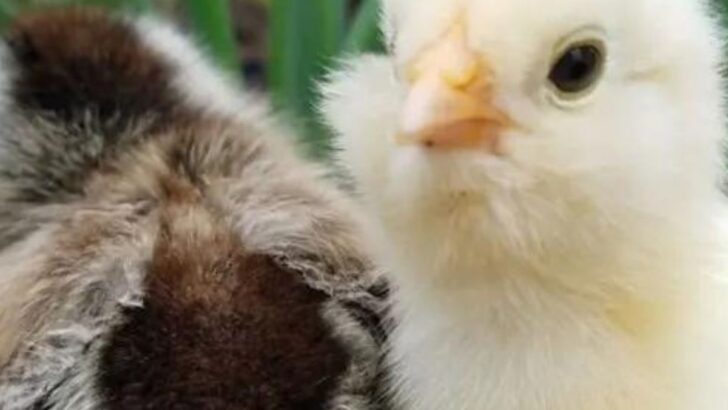

Quick Guide To Raising Backyard Chickens
Thursday 28th of July 2022
[…] A Hen Or A Rooster? How Do I Know What My Chick Is? […]